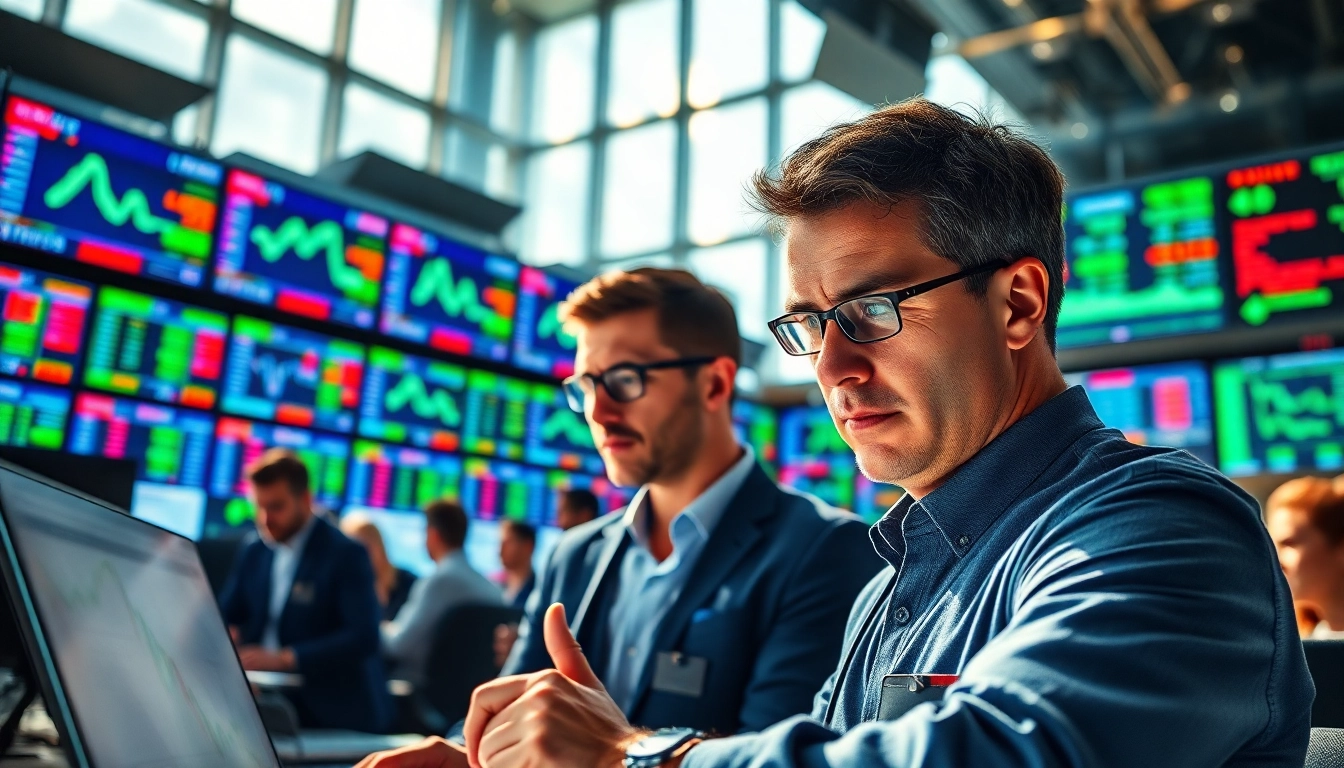Understanding Trade Futures
What Are Trade Futures?
Trade futures refers to the practice of entering into contracts that obligate the buyer to purchase, and the seller to sell, a specific asset at a predetermined price on a specific date in the future. This type of trading revolves primarily around commodities like oil, gold, agricultural products, and even financial metrics such as stock market indices. Unlike traditional trading, futures do not necessarily require ownership of the underlying asset – they are classified as derivatives, which derive their value from the performance of the underlying asset.
Futures contracts are standardized agreements traded on regulated exchanges, which makes them distinct from other types of contracts. These contracts serve various purposes, including hedging against price fluctuations or speculating to profit from market movements. Understanding the mechanics of how futures work is essential for any serious trader interested in this market.
The Importance of Trade Futures in Financial Markets
Trade futures play a critical role in financial markets for several reasons. They provide a way for producers and consumers to hedge against price changes in the underlying assets. For instance, farmers might enter into futures contracts to lock in prices for their crops, while oil producers might hedge against declining prices.
Additionally, futures trading can enhance market liquidity. Traders who buy and sell futures contracts increase trading volume in the market, providing more opportunities for price discovery. This liquidity is essential for price efficiency in the underlying markets, as it reduces the cost and risk associated with participating in these markets.Trade futures also enable investors to speculate on future price movements without having to own the physical commodity itself, which can lead to greater market engagement from a wider array of participants.
Types of Futures Contracts
There are primarily two types of futures contracts: commodity futures and financial futures. Commodity futures are built around physical products like oil, gold, wheat, and livestock. Financial futures, on the other hand, encompass a variety of financial instruments such as stock index futures, currency futures, and interest rate futures.
Within these categories, further classifications exist. For instance, futures can be categorized based on their expiration dates or whether they are cash-settled or physically delivered at expiration. Cash-settled futures, which are more common in financial markets, do not require physical delivery of the asset. Instead, they are settled in cash based on the difference between the futures contract price and the actual price of the underlying asset at expiration.
How to Trade Futures Successfully
Setting Up a Futures Trading Account
Setting up a futures trading account is the first crucial step for anyone looking to enter this market. The process usually begins with selecting a reputable broker that provides access to futures trading. Here are the key steps to follow:
- Research Brokerage Firms: Not all brokers offer the same features, so look for one with a strong reputation, good trading platform, low commissions, and educational resources.
- Open a Trading Account: Once you’ve found a suitable broker, complete their application process to set up your account. You will need to provide information about your financial background, trading experience, and objectives.
- Fund Your Account: After your account is approved, you’ll need to fund it with sufficient capital. Be aware of margin requirements, as futures trading involves leverage.
- Choose a Trading Platform: Your broker will typically offer a trading platform. Familiarize yourself with its tools and features, as they are essential for navigating the futures market efficiently.
Essential Trading Strategies for Beginners
Trading futures can be intimidating for newcomers, but several strategies can ease the learning curve:
- Trend Following: This strategy involves identifying upward or downward market trends and trading in the same direction. It requires patience and keen observation of market signals.
- Range Trading: Traders recognize that prices often move within a specific range. Buying at support levels and selling at resistance levels can yield profits.
- Breakout Trading: When prices break above a resistance level or below a support level, traders may enter a position expecting a continued movement in that direction.
Key Indicators for Trade Futures
Successful futures trading relies on various economic indicators and signals to optimize entry and exit points. Key indicators include:
- Volume: Volume analysis can show the strength of price movements. Higher volumes often indicate stronger trends.
- Open Interest: Monitoring open interest helps to gauge market sentiment. An increasing open interest suggests that new money is entering the market, while declining open interest can indicate potential reversals.
- Moving Averages: Moving averages smooth out price data over specific periods and can act as indicators of market trends.
Risk Management in Futures Trading
Identifying Risks Associated with Trade Futures
Futures trading is inherently risky, and understanding the types of risks involved is essential for effective management. Risks can generally be categorized as follows:
- Market Risk: This involves the risk of losses due to adverse price movements in the futures market.
- Credit Risk: Futures are typically settled through exchanges with counterparty risks, but they are generally mitigated through margin requirements.
- Liquidity Risk: This represents the risk of being unable to buy or sell positions quickly without significant price changes.
Utilizing Stop-Loss Orders
Implementing stop-loss orders is a fundamental strategy for managing risks in futures trading. A stop-loss order automatically executes a sell order when the market price falls to a specified level. By setting stop-loss orders effectively, traders can limit their potential losses and better manage their risk exposure.
Diversification Strategies in Futures Trading
Diversification is another key element in managing risk. This strategy involves spreading investments across various futures contracts or asset classes. By not putting all your capital into a single position or contract, you mitigate risks associated with market fluctuations in any one area.
Analyzing Market Trends for Trade Futures
Fundamental Analysis in Futures Markets
Fundamental analysis involves evaluating various factors that can influence the price of futures contracts. For commodities, these factors can include:
- Supply and Demand: Understanding these basics can help traders anticipate price movements.
- Weather Patterns: For agricultural commodities, weather can significantly impact supply levels.
- Geopolitical Events: Issues like trade agreements and conflicts can affect commodity prices globally.
Technical Analysis Techniques for Trade Futures
Technical analysis involves quantifying and analyzing historical price data to predict future market movements. Techniques include:
- Charts: Analyzing different chart types, such as candlestick or bar charts, reveals trends and reversal patterns.
- Indicators: Using indicators like relative strength index (RSI) or moving average convergence divergence (MACD) can provide insights into current market conditions.
Using Economic Indicators to Predict Futures
Economic indicators such as GDP growth rates, unemployment figures, and inflation metrics can have far-reaching implications for futures markets. Traders should keep abreast of relevant economic reports and data releases, as they often induce volatility that can create trading opportunities.
The Future of Trade Futures and Market Opportunities
Emerging Trends in Trade Futures
As the financial landscape continues to evolve, several emerging trends are influencing the futures market. These include:
- Sustainable Investing: There is a growing emphasis on environmentally friendly commodities and investments that contribute to sustainability goals.
- Technological Advancements: The rise of algorithmic trading and enhanced data analytics tools is revolutionizing how traders analyze markets.
Technology’s Role in Futures Trading
Technology plays an essential role in the accessibility and efficiency of futures trading. Algorithmic trading utilizes computer programs to trade assets at speeds and volumes that human traders cannot match. Additionally, innovations in blockchain technology might enhance transparency and security in futures contracts.
Preparing for Market Volatility
Volatility is a defining characteristic of futures markets. Preparing for and adapting to this volatility is crucial for traders. Key strategies include maintaining flexible trading strategies, regularly reviewing positions, and staying informed about global events that could impact prices. Having a well-defined risk management plan in place can also help traders weather the storms of market fluctuations.



